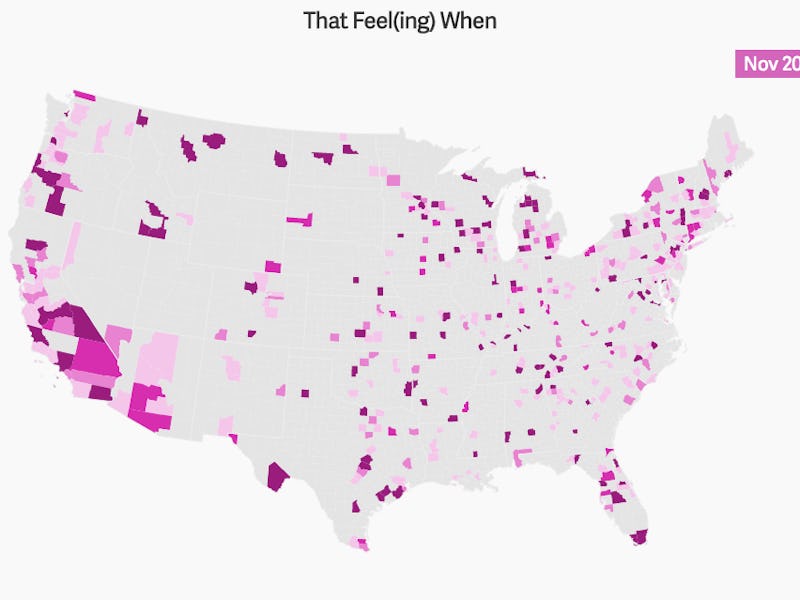Etymologists used to have the near impossible job of determining where and when words entered the common lexicon using anecdotal evidence tied to colloquial sources or written accounts. But linguists like Jack Grieve of Aston University in Birmingham, England are now able to use new treasure troves of datasets like social media sites to determine how our language is changing.
Grieve and Quartz have teamed up to produce a map that visualizes the nearly nine billion words tweeted out on Twitter between 2013 and 2014 as a way to track a unique emerging words like “baeless” or “fleek” that have organically sprung from these digital sources.
Twitter is the perfect dataset for researchers like Grieve because it offers up linguistic changes in realtime, all wrapped up with dates, timecodes, and any other metadata that can be used to track these types of changes. It’s also a more natural way for people to use linguistic outliers because platforms like Twitter invite people to speak in slang as a way to characterize their sentiments without using extra words.
The real-time data spread on many of the words is surprising. Take for instance “tfw,” the acronym meaning “that feeling when.” According to the map, tfw popped up almost simultaneously in October 2013 on both coasts of the country. There were recorded uses in the southwest around Los Angeles and Las Vegas, and in New England around Hartford, Connecticut. It then began to pepper the West Coast and mid-Atlantic region with other uses starting around Oklahoma City through the end of that year.
By mid-2014 it was used mostly in Southern California, the bottom tip of Florida, and the Northeast region of the country, then ended out the year with it being used in a smattering of locations all across the country.
It’s data like this that will be the key to showing how we converse in an increasingly connected world. Check out some of the new words yourself on Quartz.
